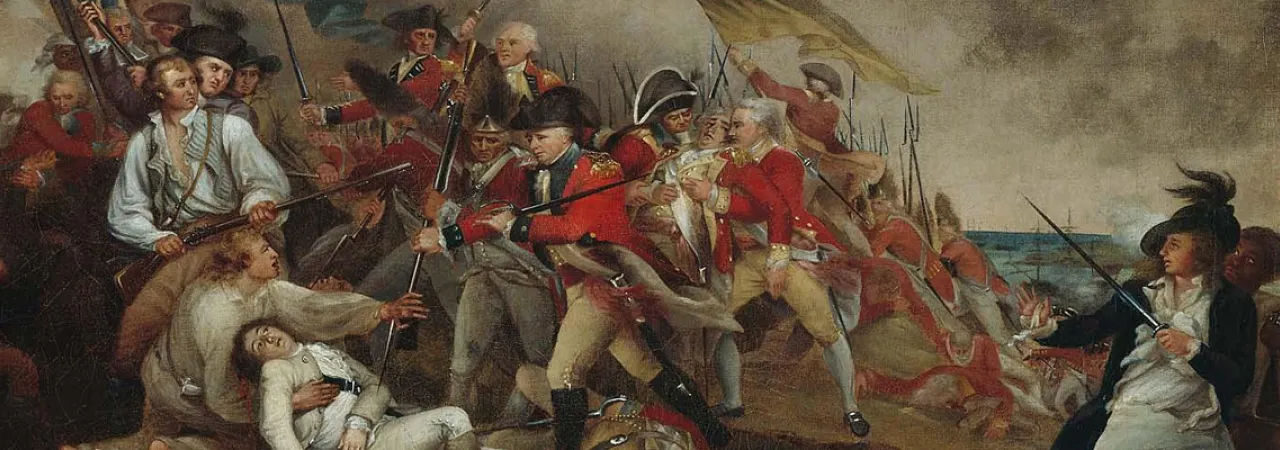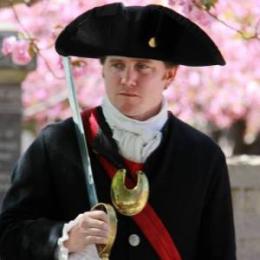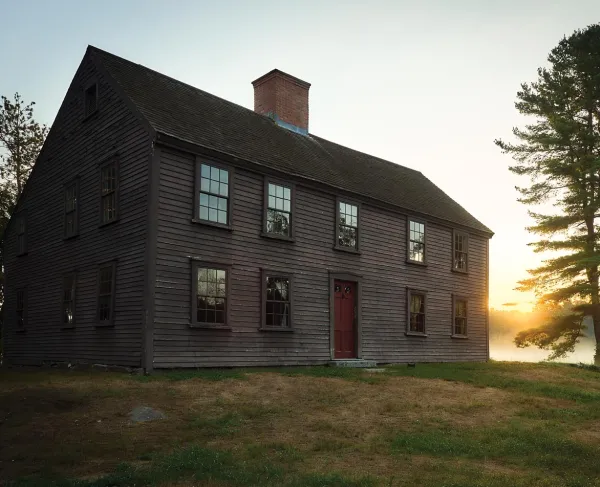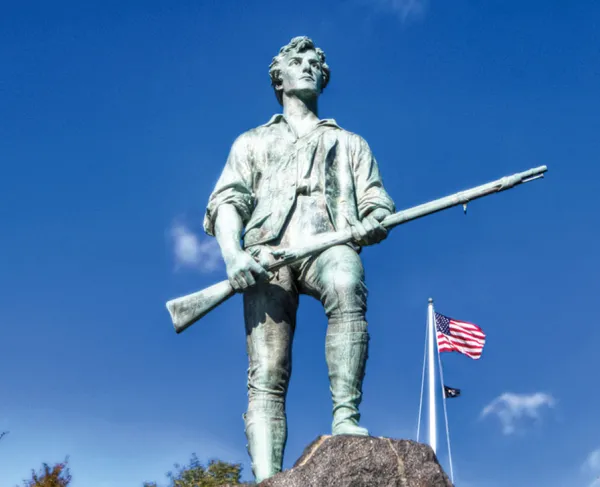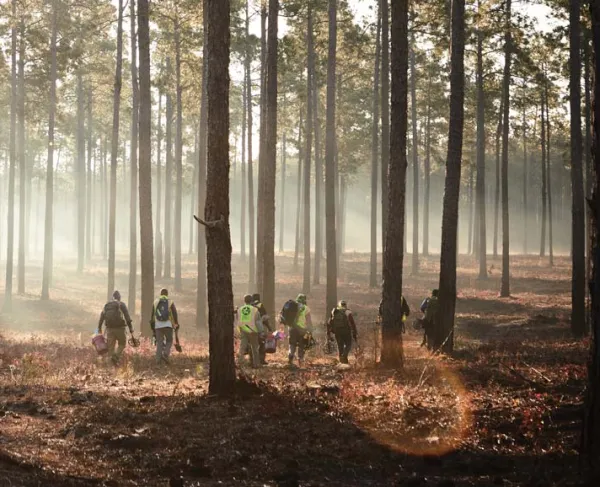The military tactics of the Revolutionary War were informed by the weapons of the period. Battles were fought with numerous different types of small arms. These included bladed weapons used for thousands of years and black powder firearms that had only been used for a few hundred years. All of the firearms that were used had flintlock technology. Flintlock firearms utilized a firing mechanism whereby when the trigger was pulled, a piece of rock (flint) would strike a piece of steel creating a spark that would ignite black powder to discharge the piece.
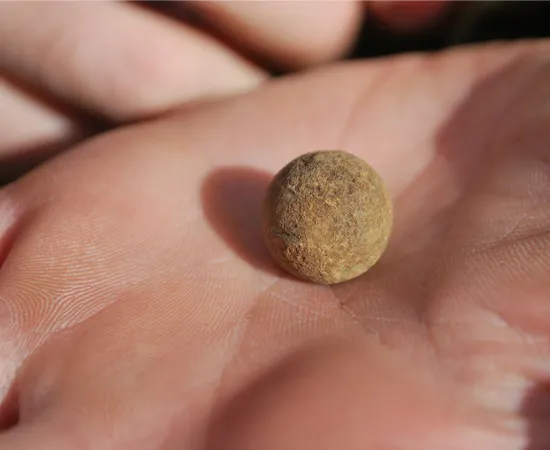
The main weapon on any Revolutionary War battlefield was the smoothbore flintlock musket. These muskets were around five feet long and weighed around ten pounds. There were a few different styles that were used, and usually depended on where they were made. The primary British musket was the second model short land Brown Bess musket and the primary French musket was the Charleville musket. American soldiers would often have a combination of Brown Besses or Charlevilles. Many of the militias had Brown Besses from when they were part of the British Empire and the Congress imported numerous French muskets during the war. There also were some locally made muskets that were usually made before the war as hunting fowlers.
Smoothbore muskets were excellent for firing quickly and repeatedly. A well-trained soldier could fire three or four shots in a minute, or every 15 or 20 seconds. The soldiers would carry about 30 pre-rolled musket cartridges in a cartridge box they wore on their hip. The cartridges were paper tubes filled with black powder and lead musket ball, usually about .69 or .75 caliber. The soldiers would take a cartridge, tear the paper with their teeth, and pour a pinch of powder in the pan of the musket on the lock. Then they would pour the remaining powder, ball, and paper down the muzzle and use a steel ramrod to drive the ball to the breech. After returning their ramrod, they would take aim at their target and fire the musket. They also could attach a steel bayonet of about 16” in length to the end of the musket. The socket bayonet was made so the musket could be fired with bayonet fixed to the end. These smoothbore muskets were only accurate to about 80 yards. Because of this reason, armies used linear tactics to consolidate their firepower. Battles often involved numerous volley firings that would inflict casualties and break up formations and then they would rely on bayonet charges to drive the enemy from the field. Fighting with bayonets resulted in ghastly wounds that were difficult to heal. With medical knowledge about the human body still developing, and with no germ theory, those wounded in combat had a mixed chance of surviving their wounds.
In addition to smoothbore muskets, both sides also employed rifles. These were flintlock muskets that had grooves carved inside the barrel that allowed the musket balls to spin when exiting the rifle. The spinning balls were much more deadly at long range. Americans had numerous long rifles that were accurate at 250 yards. However, rifles were very slow to reload. Soldiers often needed a minute or two to reload a rifle, since the grooves made it take longer to ram the ball to the breech. Rifles were often also built for hunting and were not capable of attaching a bayonet to them. Thus, while the rifles were effective at long range, if the enemy charged with bayonets, riflemen had to give way. Although, the American Army soon developed a way where riflemen would fire until the British charged at them, and they would fall back behind American regulars who were equipped with muskets and bayonets for protection.
The Americans were not the only army equipped with rifles. On the British side, German auxiliaries called Jaegers (German for hunters) carried rifles. British Major Patrick Ferguson had developed a special breech loading rifle called the Ferguson rifle. The British would often use their riflemen in the same way the Americans did, to screen enemy movements and operate on the flanks of their musket carrying infantry.
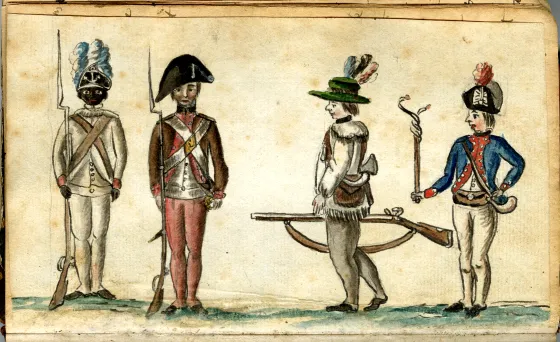
The rifles would prove to play pivotal roles in some battles. At the Battle of Saratoga, an American rifleman picked off British General Simon Fraser and helped the Americans win the battle. Rifle technology would continue to grow after the war and ultimately changed the way battles were fought in the American Civil War.
In addition to muskets, officers on both sides carried pistols, swords, and polearms to lead and to use in close quarters combat. The officers’ main duty was to keep the formations together in a battle and could use their swords and polearms to help do that but would use them for combat when the two armies locked in hand to hand combat.
In addition to infantrymen carrying small arms, both sides employed cavalry in the war, and these mounted troops were often equipped with pistols and curved sabers used for slashing. The cavalry would often charge into enemy infantry formations to cut down enemy soldiers or engage other cavalry units in hand to hand combat.
Ultimately, the small arms of the Revolutionary War, with the exception of the rifle, necessitated that combat happen in close quarters. More than most later wars, the warfare of the Revolutionary War happened within a hundred yards of each other and often resulted in deadly hand to hand combat.
Further Reading:
- British Military Long Arms in Colonial America By: Bill Ahearn and Robert Nitollo
- Firearms in American History - 1600 to 1800 By: Charles Winthrop Sawyer
We can save three remarkable battlefield sites if we can raise $201,500. Every dollar you can donate to this cause will be multiplied by $23.80.
Related Battles
1,300
587
1
102
325
381
93
300
330
1,135
149
868
1,900
324
